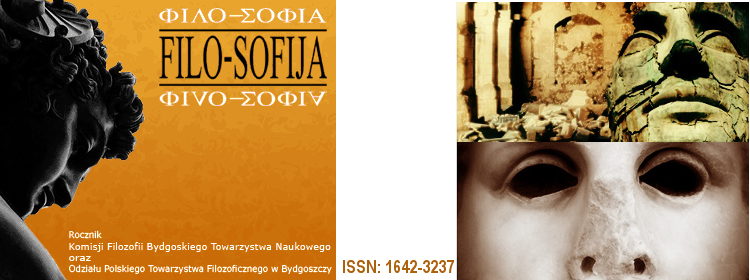Pathos wobec wzniosŇāoŇõci w traktacie Peri hypsous Pseudo-Longinosa
Abstract
The article is an attempt of comparison between two ancient terms, pathos and hypsos (the sublime), contained in Pseudo-Longinus‚Äô tract Peri hypsous. I point out that the term of pathos is something different and separate from hypsos, although it constitutes a source of the rhetorical sublime and is not entirely independent from the latter. I start from analyzing rhetorical tracts prior to Peri hypsous, i.e. Rhetoric by Aristotle and De oratore by Cicero. The results indicate that the supposed, akin relationship between pathos and sublime is implicitly included in the studied writings. Subsequently, I sequentially describe nature and functions of hypsos and pathos which appear in Longinus‚Äô tract. I emphasize that according to Longinus the sublime can be pathetic and full of violence (as in Demosthenes‚Äô speeches) or non-pathetic (as in Plato‚Äôs or Cicero‚Äôs speeches), which demonstrates that one can consider sublime independent from pathos and, in addition, pathos independent of sublime, insofar suffering is the only quality of experience and lacking of ‚Äúlofty‚ÄĚ affection. Moreover, I point out that pathos as an emotional source of sublime is of poetic, creative and irrational nature, in which association with the Platonic mania shows up. As part of the conclusion I put the accent, among others, on non-rhetorical dimensions of pathos, specifically on its aesthetic dimension, inasmuch as Longinus‚Äô pathos, more than ancient sublime, anticipates the aesthetics of horror.
PeŇāny tekst:
PDFAdministracja Cytowania | Strony czasopism
